Choosing the right ski goggles size is crucial for optimal performance and comfort on the slopes. This guide helps you understand fit, sizing, and key features to ensure a perfect match for your needs.
Understanding the Importance of Proper Fit
A proper fit is essential for ski goggles to ensure optimal performance, comfort, and visibility. Ill-fitting goggles can cause discomfort, fogging, or limited peripheral vision, affecting your skiing experience. A snug yet non-restrictive fit prevents gaps, ensuring protection from wind, snow, and cold. Proper fit also enhances durability and functionality, allowing you to focus on your performance. Investing time in finding the right size guarantees a more enjoyable and safe experience on the slopes, making it a critical step in selecting your ski goggles.
Overview of Ski Goggles Sizing
Ski goggles are generally categorized into small, medium, and large sizes, designed to accommodate various face shapes and sizes. While sizing can vary slightly between brands, most follow a standard framework to ensure compatibility. Specialized fits, such as Asian Fit or Women’s Fit, cater to specific facial structures. Accurate measurements and trying goggles on, when possible, are crucial for ensuring the right fit. Proper sizing ensures optimal comfort, visibility, and performance, making it a key factor in selecting the right pair of ski goggles for your needs.
Key Considerations for Choosing the Right Size
When selecting ski goggles, consider face shape, size, and helmet compatibility to ensure a seamless fit. Proper sizing prevents gaps or pressure points, enhancing comfort and visibility. Measure your face accurately, focusing on width and height. Lens type, tint, and anti-fog features are also vital for performance. Interchangeable lenses offer versatility, while frame size should align with your facial dimensions. Trying goggles on, if possible, is ideal to gauge comfort and fit. Prioritize features that match your skiing needs, ensuring optimal protection and clarity on the slopes.
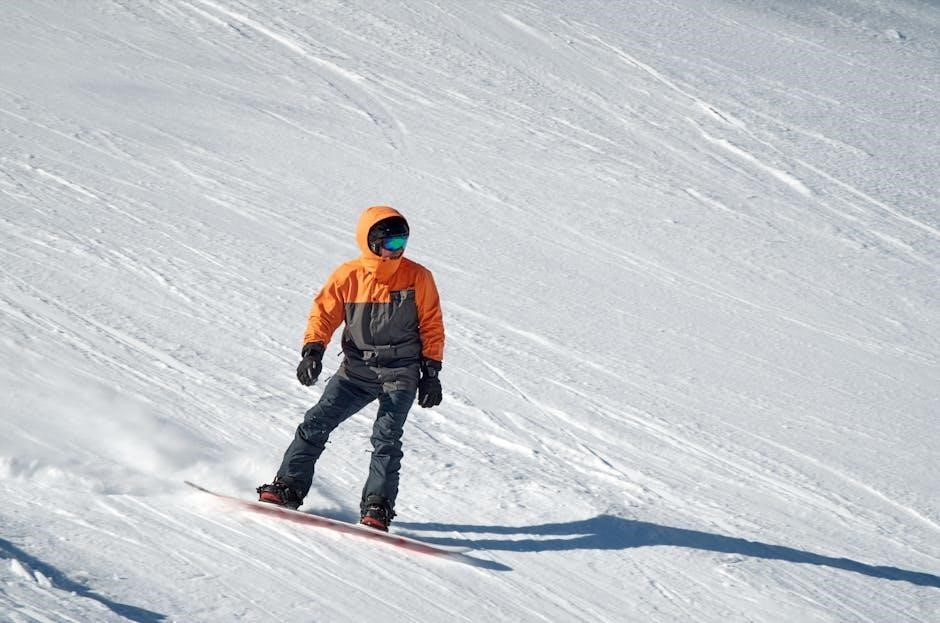
How to Measure Your Face for Ski Goggles
Use a flexible tape measure to determine your face width and height. Measure from temple to temple and brow to cheekbone for accurate sizing and fit.
Methods for Measuring Face Size
To measure your face for ski goggles, use a flexible tape measure. Start by measuring the width of your face from temple to temple. Next, measure the height from your brow to your cheekbone. Ensure the tape is level and snug but not too tight. These measurements will help determine the ideal goggle size. For accuracy, repeat the process twice and note the average. Additionally, consider the shape of your face—round, oval, square, or heart-shaped—to ensure proper fit. This method ensures a comfortable and secure goggle fit for optimal performance on the slopes.
Tools Needed for Accurate Measurements
Tools Needed for Accurate Measurements
To measure your face accurately for ski goggles, you’ll need a few simple tools. A flexible tape measure is essential for capturing precise dimensions around your face. A mirror is helpful to ensure the tape is properly aligned and level. Additionally, have a pen and paper ready to record your measurements. For extra accuracy, consider enlisting a friend to assist. Proper tools ensure reliable data, making it easier to find the perfect goggle fit. These measurements will guide you in selecting the right size for comfort and performance on the slopes.
How to Determine Your Face Shape
Determining your face shape helps in selecting ski goggles that fit comfortably and provide optimal vision. Oval faces are longer than wide, while round faces are wider with full cheeks. Square faces have a strong jawline, and heart-shaped faces taper from a broad forehead to a narrow chin. Use a tape measure to assess width and length. For oval, measure from the center of the forehead to the chin. For round, measure cheekbone width. For square, measure jawline length. For heart-shaped, compare temple width to jawline. Understanding your face shape ensures a better fit and comfort, avoiding pressure points and gaps. This step is crucial for choosing goggles that align with your facial structure, enhancing both performance and comfort on the slopes.
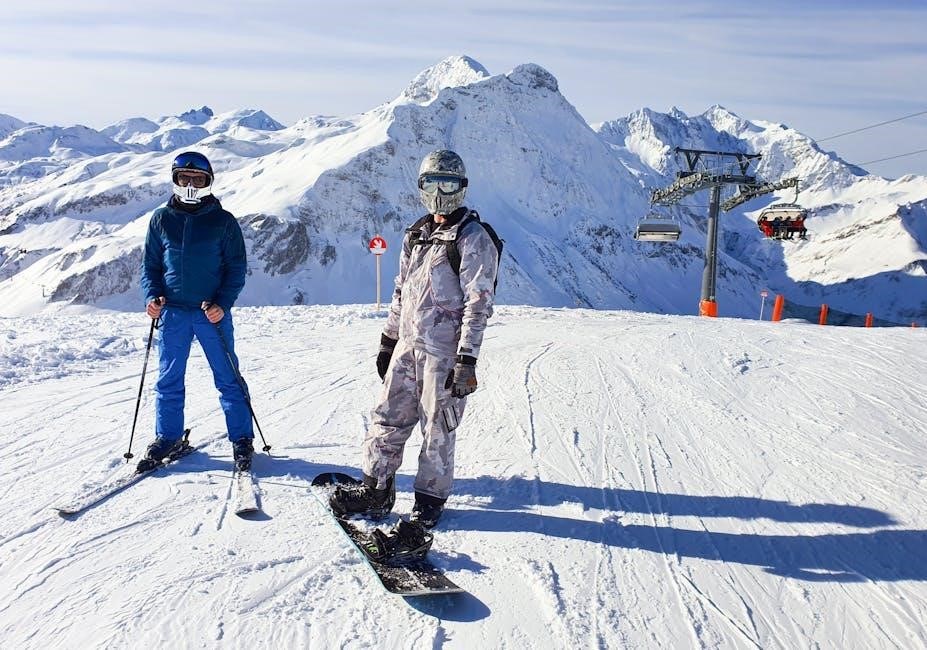
Standard Ski Goggles Size Options
Standard ski goggles come in Small (S), Medium (M), and Large (L) sizes, designed to fit various face types for optimal comfort and performance on the slopes.
Small (S) Size Goggles
Small (S) size goggles are designed for narrower faces, typically suited for kids, youth, or adults with smaller facial features. They offer a snug fit, reducing gaps and ensuring optimal comfort. These goggles are often preferred by women or those with petite face shapes. Some brands specialize in S sizes, providing better coverage and less bulk. Look for models with adjustable straps to customize the fit further. S size goggles are ideal for skiers seeking a compact, lightweight option that maintains clarity and protection on the slopes.
Medium (M) Size Goggles
Medium (M) size goggles are the most common choice, fitting average face shapes comfortably. They suit men and women with medium-sized facial features, offering a balanced fit that ensures clarity and protection. These goggles are versatile, accommodating various helmets and head shapes. Many M size goggles feature interchangeable lenses, allowing adaptability to different light conditions. They provide excellent coverage without feeling bulky, ensuring a snug fit that minimizes gaps and pressure points. Medium goggles are a great option for skiers seeking a reliable, all-around choice that combines comfort and performance on the slopes.
Large (L) Size Goggles
Large (L) size goggles are designed for those with larger facial structures or specific needs. They offer wider frames and enhanced coverage, ensuring optimal protection and visibility. These goggles often feature adjustable straps for a customizable fit and are compatible with a variety of helmets. Large goggles are ideal for skiers who prefer extra space or have unique face shapes. They provide a snug yet comfortable fit, minimizing gaps and pressure points. Choosing the right size ensures a secure fit and excellent performance on the slopes.
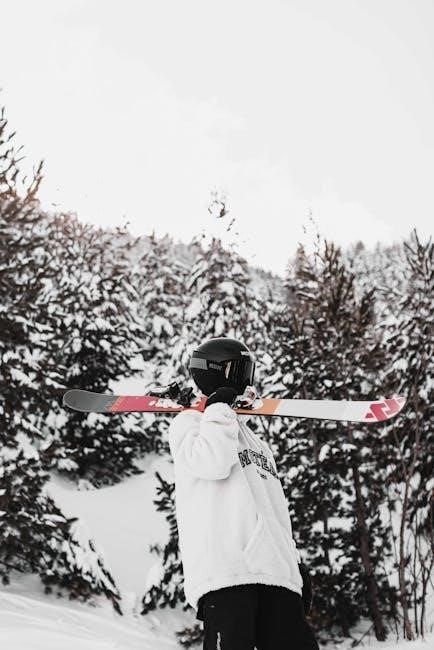
Specialized Fits for Ski Goggles
Specialized fits cater to diverse facial structures, ensuring comfort and performance. Options include Asian Fit, Women’s Fit, and Over-the-Glasses (OTG) designs, addressing unique needs effectively.
Asian Fit Ski Goggles
Asian Fit ski goggles are specifically designed for individuals with broader cheekbones and a flatter nose bridge. These goggles feature a more curved frame and enhanced foam padding to ensure a comfortable, pressure-free fit. They cater to the unique facial structure of many Asian skiers, providing better coverage and reducing gaps. Top brands like Oakley and Anon offer Asian Fit options, ensuring optimal performance and style. This specialized design addresses the needs of those who struggle with standard goggle fits, delivering unparalleled comfort and clarity on the slopes.
Women’s Fit Ski Goggles
Women’s Fit ski goggles are tailored to accommodate smaller, more delicate facial features and narrower face shapes. Designed with contoured frames and adjustable straps, they ensure a snug and comfortable fit. These goggles often feature stylish designs and vibrant color options, appealing to female skiers. Popular brands like Smith, Giro, and Oakley offer Women’s Fit models, providing excellent optical clarity and UV protection. They also cater to diverse preferences with interchangeable lenses and helmet-compatible designs, ensuring both performance and style on the slopes.
Over-the-Glasses (OTG) Fit
Over-the-Glasses (OTG) ski goggles are specifically designed for skiers who wear prescription eyewear. These goggles feature a deeper frame and softer, more flexible materials to comfortably fit over glasses. They ensure that your eyewear stays in place while maintaining a snug, gap-free seal around your face. OTG goggles are ideal for those who prefer not to switch between glasses and goggles. Many brands, including Smith, Giro, and Oakley, offer OTG options, providing excellent compatibility and comfort for skiers with prescription lenses.
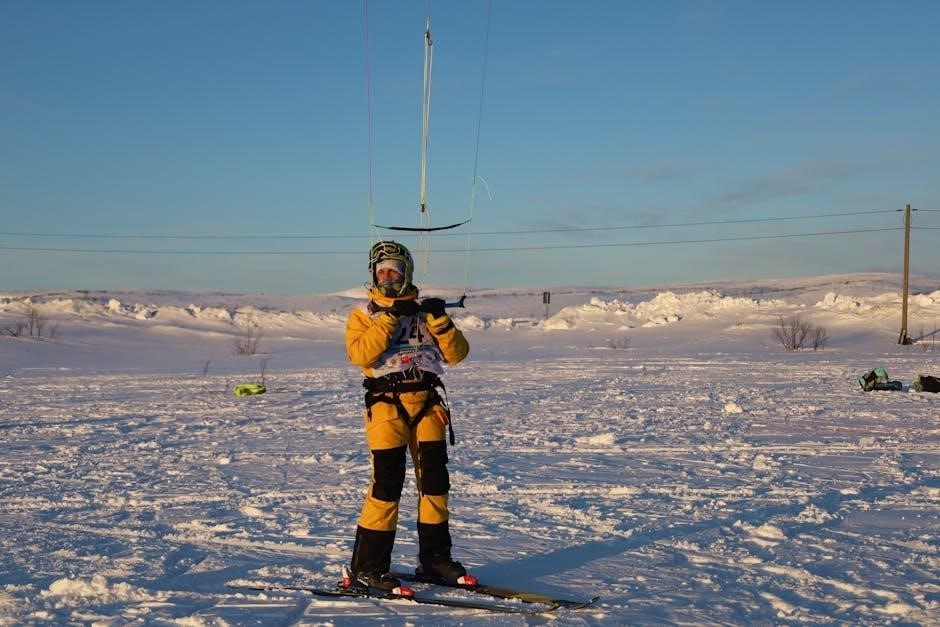
Ski Goggles and Helmet Compatibility
Ensuring your ski goggles fit seamlessly with your helmet is essential for safety and performance; Proper compatibility prevents gaps and ensures clear vision while skiing.
How to Ensure Proper Fit with Your Helmet
For optimal performance, ski goggles must pair seamlessly with your helmet. Choose goggles that align with your helmet’s size—small helmets work best with one-size-fits-all goggles, while medium to large helmets suit regular fits. Ensure the goggles sit comfortably without compressing your forehead or temples. Test the fit by wearing both together to check for pressure points and visibility. Proper alignment ensures clear vision and safety, while gaps can compromise both comfort and performance. Always prioritize a snug, gap-free fit for an uninterrupted skiing experience.
One-Size-Fits-All vs. Regular Fit
One-size-fits-all goggles are designed for versatility, offering adjustable straps to accommodate various head sizes, including smaller helmets. Regular fit goggles are tailored for medium to large helmets, providing a more precise fit. Choose one-size-fits-all for adaptability and ease, while regular fit ensures compatibility with larger headgear. Both options prioritize comfort and performance, allowing skiers to enjoy a seamless experience on the slopes without compromising on style or functionality.
Key Features to Consider Beyond Size
Beyond size, consider lens type, tint, UV protection, polarization, anti-fog coatings, and interchangeable lenses for optimal performance and clarity in various skiing conditions.
Lens Type and Tint
Lens type and tint are critical for visibility in varying light conditions. Cylindrical lenses offer a wider field of view, while spherical lenses reduce distortion. Tints like rose or amber enhance contrast in low light, while darker tints (e.g., black or grey) are ideal for bright conditions. Polarized lenses reduce glare from snow, and mirrored coatings minimize UV rays. Anti-fog treatments prevent misting, ensuring clear vision. Choose lenses based on weather and personal preference to optimize performance and comfort on the slopes.
Interchangeable Lenses
Interchangeable lenses offer versatility for varying light conditions and personal preferences. Many goggles feature magnetic or snap-on systems, allowing quick lens changes. This feature is ideal for skiers who need different tints for sunny vs. cloudy days. Look for goggles with multiple lens options, such as low-light amber or mirrored lenses for brightness. While interchangeable lenses add convenience, they may increase the price. Brands like Oakley and Smith excel in this technology, providing seamless swaps to adapt to any mountain environment. This feature is a must for those seeking flexibility in their skiing experience.
Frame Size and Shape
Frame size and shape significantly impact both functionality and style. Smaller frames suit narrower faces, while larger frames provide wider peripheral vision. Round or angular shapes cater to different face shapes, ensuring comfort. Brands offer frames in small, medium, and large sizes, with some featuring adjustable designs. Proper fit is essential for performance and comfort, ensuring compatibility with helmets. Choose a frame that complements your face shape and meets your skiing needs for optimal vision and protection on the slopes.
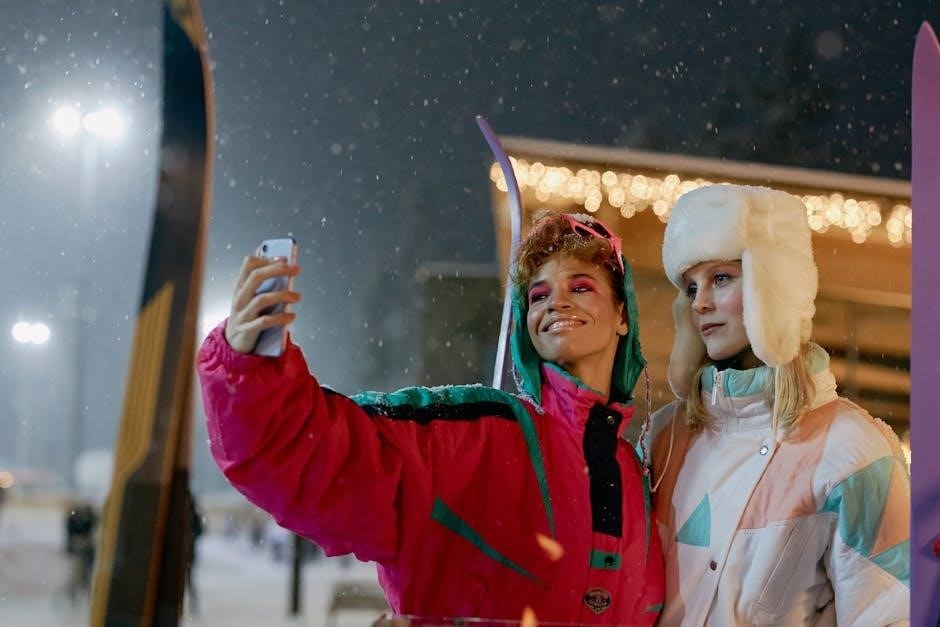
How to Choose the Right Size for Your Needs
Measure your face, consider fit comfort, and match your skiing style to ensure goggles meet your performance and protection requirements on the slopes.
Factors Influencing Goggle Size
Several factors determine the ideal goggle size, including face shape, head circumference, and personal comfort preferences. Helmet compatibility is also crucial to ensure a seamless fit without pressure points. Additionally, the intended use, such as racing or casual skiing, can influence size choices. Proper fit prevents gaps and ensures clear vision, while considering interchangeable lenses and frame style further tailors the goggles to individual needs for optimal performance and comfort on the slopes.
Face Shape and Goggle Fit
Your face shape plays a significant role in determining the best goggle fit. Round faces benefit from angular frames to balance proportions, while oval faces suit most frame styles due to their symmetry. Square faces look good with softer, curved frames to contrast sharp angles, and heart-shaped faces prefer frames with wider temples to even out proportions. Additionally, specialized fits like Asian Fit and Women’s Fit cater to unique facial structures, ensuring comfort and compatibility with helmets for optimal performance and clear vision on the slopes.
Personal Comfort and Preference
Personal comfort and preference are vital when selecting ski goggles. Beyond size, consider padding, strap adjustability, and lens features that suit your skiing style. Soft, cushioned frames and nose pieces enhance comfort, while adjustable straps ensure a secure fit. Some prefer mirrored lenses for glare reduction, while others opt for clear lenses for low-light conditions. Prioritize features like anti-fog coatings or polarization based on your needs. Ultimately, the goggles should feel comfortable, allowing you to focus on your performance without distractions, ensuring an enjoyable experience on the slopes.
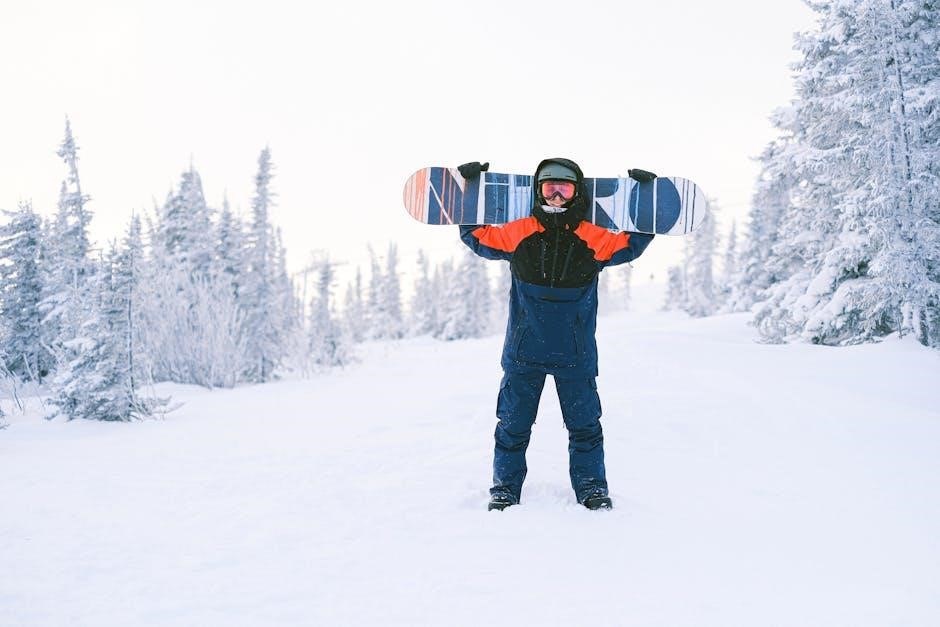
How to Choose Ski Goggles Online
Choosing ski goggles online requires relying on detailed product descriptions, size charts, and customer reviews. Ensure the goggles fit your face shape and meet your performance needs.
Tips for Selecting the Right Size Online
When selecting ski goggles online, use the size chart provided by the manufacturer to ensure accuracy. Read customer reviews to gauge real-world fit experiences. Consider your face shape—round, oval, or square—and compare it with the goggle’s frame design. Check if the goggles are labeled as OTG (over-the-glasses) if you wear prescription eyewear. Look for features like adjustable straps for a customizable fit. Ensure the goggles are compatible with your helmet for seamless integration. Prioritize clear product images and detailed descriptions to make an informed decision.
Importance of Reading Reviews
Reading reviews is crucial when selecting ski goggles online. Reviews provide real-world insights into comfort, fit, and performance. They highlight how goggles perform in actual conditions, helping you avoid sizes or styles that may not meet your needs. Pay attention to feedback about compatibility with helmets, anti-fog performance, and lens clarity. Reviews also reveal how well goggles fit specific face shapes or sizes. This feedback is invaluable for ensuring your goggles are comfortable and functional, making reviews a key resource for informed decision-making.
Understanding Product Descriptions
Product descriptions provide detailed information about ski goggles, including features like lens type, tint, and frame size. They often highlight compatibility with helmets and whether the goggles are designed for specific face shapes. Descriptions may also mention technical features such as anti-fog coatings or UV protection. Understanding these details helps you assess whether the goggles meet your needs. Look for terms like “Asian Fit” or “Over-the-Glasses (OTG)” if specific fits are required. Accurate descriptions ensure you make informed decisions, especially when shopping online without the ability to try the goggles on.
Best Brands for Different Face Sizes
Top brands offer tailored fits for various face sizes. Smith and Giro excel for medium faces, while Oakley and Anon cater to larger faces. Bolle suits smaller faces perfectly.
Top Brands for Small Faces
For smaller faces, brands like Bolle and Anon offer excellent options. Bolle’s compact frames provide a snug fit without compromising on features; Anon’s Relapse model is tailored for smaller face shapes, ensuring comfort and clarity. Smith Optics’ I/O Mag 4D also caters to smaller faces with its streamlined design. These brands prioritize both style and functionality, delivering goggles that perform exceptionally well while fitting seamlessly. Their attention to detail ensures that smaller faces enjoy the same level of protection and optical clarity as larger frames, making them top choices for skiers with petite features.
Best Brands for Medium Faces
Oakley, Smith Optics, and Giro are top choices for medium-sized faces. Oakley’s Flight Deck and Prizm models offer a balanced fit with superior optical clarity. Smith Optics’ I/O Mag 4D and Giro’s Axis goggles provide medium frames with interchangeable lenses for versatility. Glade’s mid-sized goggles also cater to this category, ensuring a comfortable and secure fit. These brands excel in crafting goggles that suit average face dimensions, combining style, functionality, and performance. Their medium-sized options are perfect for skiers seeking a blend of coverage and sleek design.
Recommended Brands for Large Faces
For larger face sizes, Oakley, Smith Optics, and Anon are top recommendations. Oakley’s Flight Deck goggles feature a wide frame, ideal for larger faces, with excellent peripheral vision. Smith Optics’ 4D Mag series offers an adaptable fit that accommodates larger face dimensions while maintaining comfort. Anon’s M4 goggles provide a spacious design with magnetic lens technology, ensuring a secure and comfortable fit for those with larger faces. These brands are known for their high-quality materials and innovative designs, making them excellent choices for skiers with larger facial structures seeking both style and functionality.
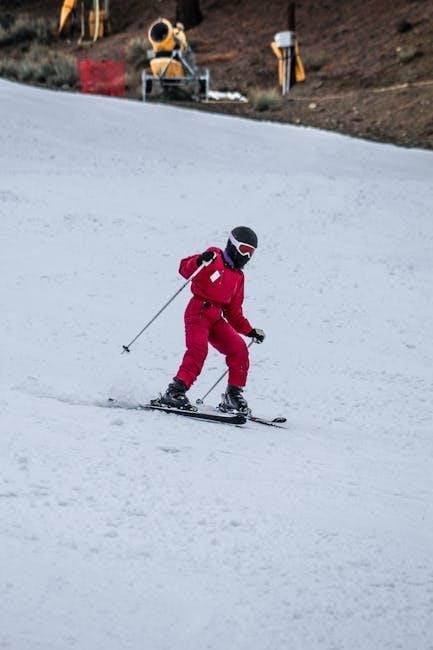
Ski Goggles Size Comparison Table
A size comparison table helps compare goggles from brands like Oakley, Smith, and Anon, detailing frame height, width, and fit to match your face size perfectly.
How to Read and Use a Size Chart
Understanding a size chart is essential for selecting the right goggles. Charts typically include measurements like frame height, width, and temple size. Start by measuring your face to match the dimensions. Compare your measurements with the chart to determine the best fit. Pay attention to specific fits like Asian Fit or OTG if applicable. Check reviews and product descriptions for additional sizing insights. Always consider your helmet compatibility and personal comfort preferences. By following these steps, you can ensure a precise and comfortable fit for your skiing needs.
Comparing Different Brands and Models
When comparing ski goggle brands and models, focus on features like frame size, lens type, and specialized fits. Brands such as Smith, Oakley, and Anon offer distinct designs catering to various face shapes. For instance, Oakley goggles often feature interchangeable lenses, while Anon specializes in Asian Fit models. Giro and Glade provide options with advanced ventilation systems. Each brand may have slightly different sizing charts, so cross-referencing measurements is crucial. Reading reviews and comparing product descriptions helps identify the best fit for your specific needs, ensuring compatibility with your helmet and personal comfort preferences.

Troubleshooting Common Fit Issues
If goggles feel too tight, try loosening the strap. For loose fits, consider a smaller size or adjustable models. Address gaps or pressure points by ensuring proper helmet compatibility and checking frame flexibility to ensure optimal comfort and performance on the slopes.
What to Do If Goggles Are Too Tight
If your ski goggles feel too tight, start by adjusting the strap to a looser setting. Ensure proper helmet compatibility, as a mismatch can cause unnecessary pressure. If discomfort persists, consider a larger size or a model with a more forgiving frame. Pay attention to pressure points around the temples, nose, or forehead, as these can lead to fatigue. If the issue remains unresolved, it may be worth exploring different brands or styles designed for your face shape and size to achieve a more comfortable fit.
How to Fix Goggles That Are Too Loose
If your ski goggles feel too loose, start by tightening the adjustable strap to ensure a snug fit. Check for proper alignment with your helmet, as improper positioning can cause gaps. If the issue persists, consider downsizing to a smaller goggle size or exploring models with a more contoured frame. Additionally, specialized fits like Asian Fit or Women’s Fit may offer better compatibility for your face shape. Ensuring a secure fit is essential for clear vision and comfort during your skiing adventures.
Dealing with Gaps or Pressure Points
If your ski goggles leave gaps or cause pressure points, ensure a snug fit by tightening the adjustable strap. Adjust the goggle position on your face to eliminate gaps and relieve pressure. If issues persist, consider a smaller size or a more contoured frame. For pressure points, slightly loosen the strap or reposition the goggles to avoid discomfort. Proper helmet compatibility and using triple-layer foam can also enhance comfort and prevent pressure points, ensuring a secure and gap-free fit for optimal performance on the slopes.
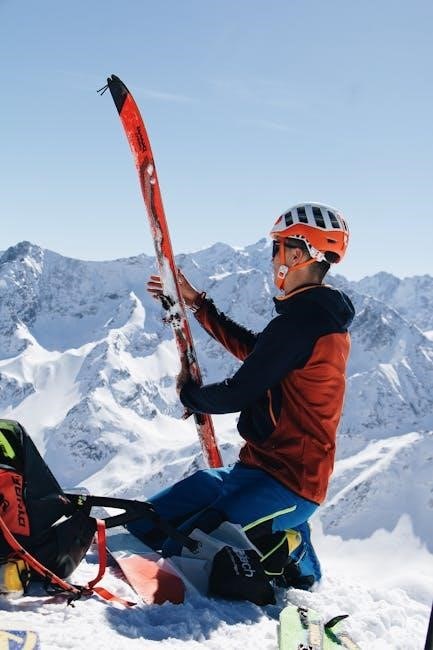
Frequently Asked Questions (FAQs)
Common questions include how to measure face size, differences between Asian and women’s fits, and ensuring compatibility with helmets for a secure, gap-free fit.
Common Questions About Goggle Sizing
Many wonder how to determine their face size and whether goggles will fit with their helmet. Others ask about the difference between Asian Fit and standard goggles, or if women’s-specific models offer a better fit. Questions also arise about how to interpret size charts and whether certain brands run larger or smaller. Additionally, users often inquire about the best way to ensure a gap-free fit and how to choose between small, medium, or large sizes based on their face shape and personal comfort preferences.
Misconceptions About Fit and Size
A common misconception is that one-size-fits-all goggles truly fit everyone, but they often fail to accommodate different face shapes and sizes. Some believe that larger goggles offer better protection, yet they may cause gaps and reduced visibility. Others think that tight goggles ensure a better seal, but this can lead to discomfort and pressure points. Many also assume that all brands size similarly, but variations exist, making it essential to consult specific size charts. Proper fit is about balance, not just tightness or coverage.
Choosing the right ski goggles size ensures comfort, performance, and safety. Consider fit, face shape, and compatibility with your helmet to make an informed decision.
Final Tips for Choosing the Perfect Fit
To ensure the best fit, try goggles on if possible, considering face shape, helmet compatibility, and adjustable features. Check lens clarity and anti-fog properties. Read reviews to confirm fit consistency. Prioritize comfort—goggles should feel snug but not tight, avoiding pressure points. Proper fit enhances performance, safety, and enjoyment on the slopes.
- Opt for goggles with adjustable straps for a customizable fit.
- Ensure the frame complements your face shape for gap-free coverage.
- Test compatibility with your helmet to maintain a seamless setup.
Importance of Proper Fit for Performance
A proper fit is essential for optimal performance, as ill-fitting goggles can compromise visibility and comfort. Goggles that are too tight may cause discomfort or pressure points, while those too loose can shift during activity, affecting clarity. A snug, gap-free fit ensures lenses stay fog-free and maintain UV protection. Proper fit also enhances compatibility with helmets, preventing interference and ensuring safety. Prioritizing fit guarantees better vision, reduced distractions, and improved overall skiing or snowboarding performance.
Future Trends in Ski Goggles Sizing
Future trends in ski goggles sizing may focus on customizable fits using 3D scanning technology to match individual face shapes perfectly. Brands are likely to prioritize adjustable frames and modular designs for universal compatibility. Additionally, advancements in smart technology could integrate features like AR displays or real-time weather updates. Sustainable materials and eco-friendly manufacturing processes may also become standard. These innovations aim to enhance comfort, performance, and personalization, ensuring goggles adapt to diverse needs while maintaining high-quality protection and clarity for skiers and snowboarders.